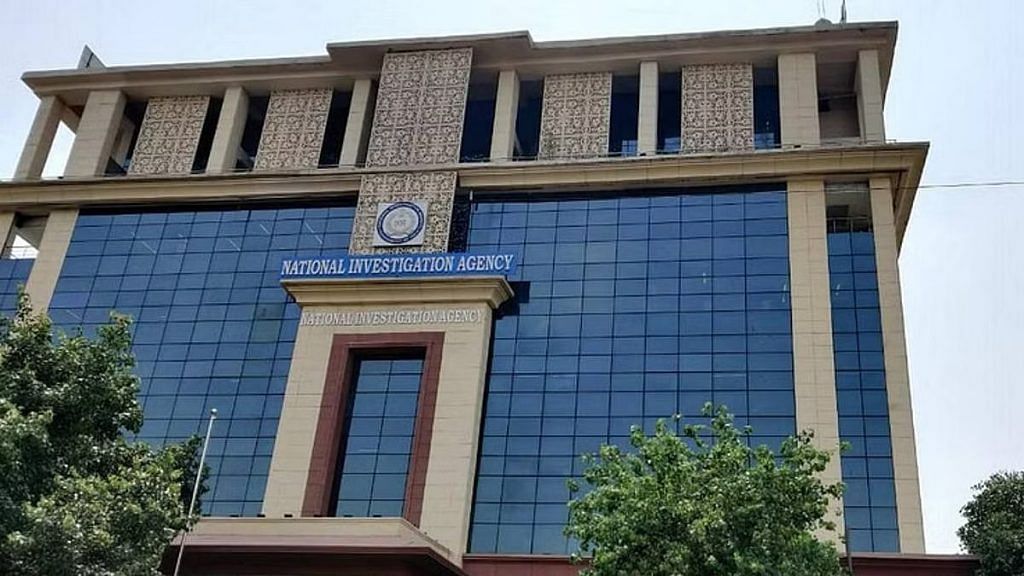Chennai/Bengaluru: Months after Tamil Nadu and Karnataka were rocked by two separate incidents of blasts in Coimbatore and Mangaluru respectively, probes by the National Investigation Agency (NIA) continue in both cases. On Wednesday, the NIA conducted raids across 40 locations in Kerala, Karnataka and Tamil Nadu leading to the seizure of a large number of digital devices and cash amounting to Rs 4 lakh, according to sources in the agency.
At around 4 pm on 23 October last year, a car laden with explosives had blown up in front of the Kottai Eswaran Temple in Tamil Nadu’s Coimbatore District. The Maruti 800 car, in which an LPG cylinder exploded, allegedly belonged to Jamesha Mubeen, a 29-year-old engineering graduate, who was in the vehicle at the time of the blast and was the only one killed in the incident.
Weeks later, on 19 November, 2022, an auto-rickshaw exploded in Mangaluru, leading to injuries to the passenger, Mohammed Shariq, and the auto-rickshaw driver Purushottam Poojari. Shariq, was allegedly carrying a pressure cooker bomb made from an Improvised Explosive Device (IED), leading to the blast.
Investigators in both cases had alleged Mubeen and Shariq have ISIS links.
While 32 locations — 14 in Coimbatore, one in Trichy, two in the Nilgiris, three in Tirunelveli, one in Tuticorin, three in Chennai, two in Thiruvannamalai, one in Dindigul, one in Mayiladuthurai, one in Krishnagiri, one in Kanyakumari, one in Tenkasi in Tamil Nadu and one in Ernakulam in Kerala — were raided by the NIA in connection to the Coimbatore case Wednesday, eight locations — two in Tiruppur and one in Coimbatore in Tamil Nadu, four in Ernakulam in Kerala and one in Mysuru, Karnataka — were searched in the Mangaluru case.
Also read: 50-day planning, 93 locations, 106 arrests — how NIA, ED executed India’s 1st ‘coordinated raids’
The blast in Coimbatore
A case had been initially registered by the Tamil Nadu police in the Coimbatore blast, but the probe was handed over to the NIA on 27 October.
Subsequent probe had led the NIA to believe that Mubin had taken the ISIS oath and was planning to carry out a “suicide attack” to cause “extensive damage” to Kottai Eswaran Temple, sources in the investigation agency had earlier told ThePrint.
Mubeen had been questioned by the NIA in 2019 over alleged ties to a radical network linked with the Easter Sunday blasts in Sri Lanka. This had led to investigators suspecting a possible terror angle in the Coimbatore blast case.
He was believed to have been in touch with the network related to Zahran Hashim, the mastermind of the Easter bombings.
Eleven people have been arrested in the case and FIR also mentioned Mubeen as an accused.
“The accused people had conspired with the deceased Jamesha Mubeen to procure different chemicals and other ingredients for fabrication of improvised explosive devices (IED), including a vehicle-borne IED, from online shopping platforms to commit sensational terrorist acts,” an NIA source had earlier told ThePrint.
Raids by the NIA had been conducted in the case previously too, with the agency raiding 42 locations in Tamil Nadu, and one in Kerala in November.
The auto blast in Mangaluru
The probe in the Mangaluru case was taken over by the NIA in December last year.
Shariq, aged in his mid-20s, has at least three cases registered against him, including a 2020 case in which he is accused of painting graffiti supporting the Lashkar-e-Taiba terror outfit and another linked to a stabbing incident around Independence Day in Shivamogga district, said sources in Karnataka police.
According to the sources, he has been on the run since September last year, travelling to Tamil Nadu and Kerala. He returned to Karnataka days before the blast, rented a home in Mysuru city under a false identity and is suspected of dealing in Bitcoins, according to police sources.
A raid of his Mysuru home by the police the same month, had led to the finding of material that can be used to make explosives, such as sulphur, phosphorus, matchboxes, nuts and bolts and circuits, among other items, the sources added.
Additional director general of police (Law & Order), Alok Kumar, had claimed at the time that Shariq had been “inspired and influenced” by global terrorist organisations. “His (Shariq’s) acts have been inspired and influenced from some terrorist organisations which is having global presence,” Kumar had said.
A picture of Shariq holding a wired pressure cooker was also shared by the police which they believe was taken just before the Mangaluru blast incident.
However, sources said the police believe that the IED placed inside the pressure cooker bomb went off in the auto “incidentally or accidentally”. NIA sources claimed the IED had been designed to carry out a large-scale attack to fuel communal tensions in the coastal region and in the state.
Sources also alleged that initial police probe in the case had revealed Shariq to have links with the ISIS and that two people, identified as Arafat Ali and Abdul Mateen Taha, were Shariq’s “handlers”.
(With agency inputs.)
(Edited by Poulomi Banerjee)
Also read: ‘Consider his age’, says SC after NIA opposes Bhima Koregaon accused Navlakha’s house arrest plea
